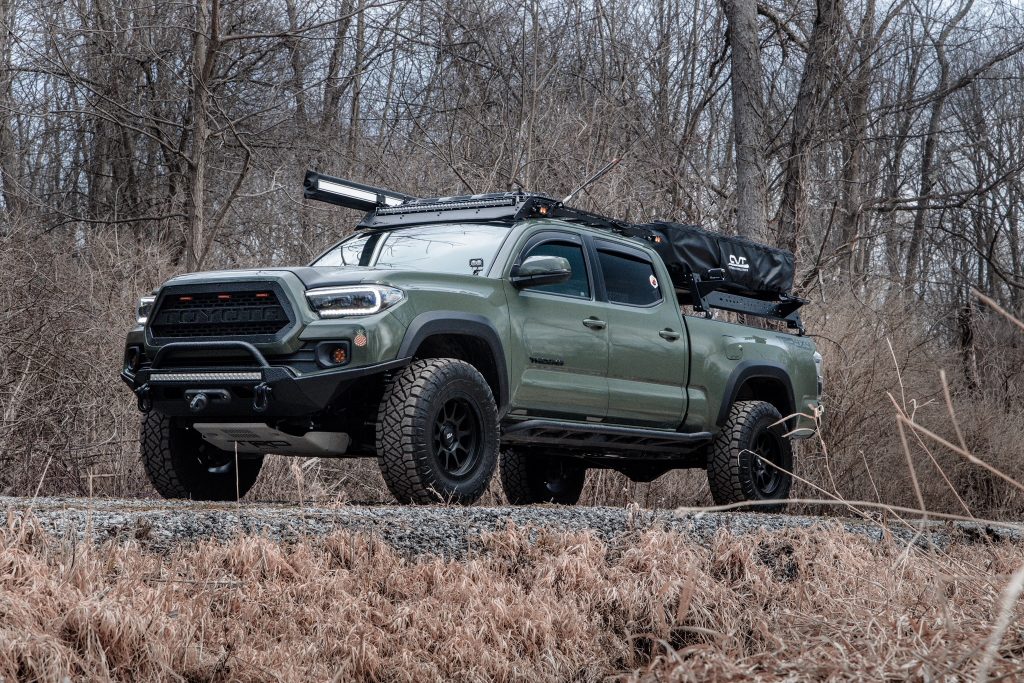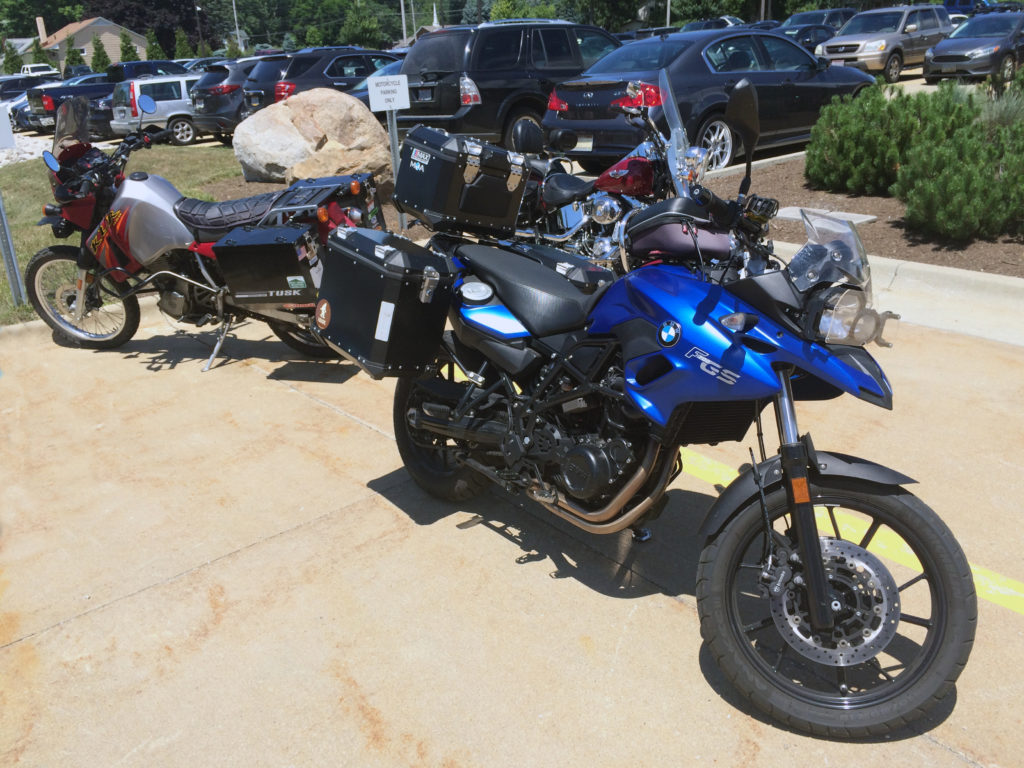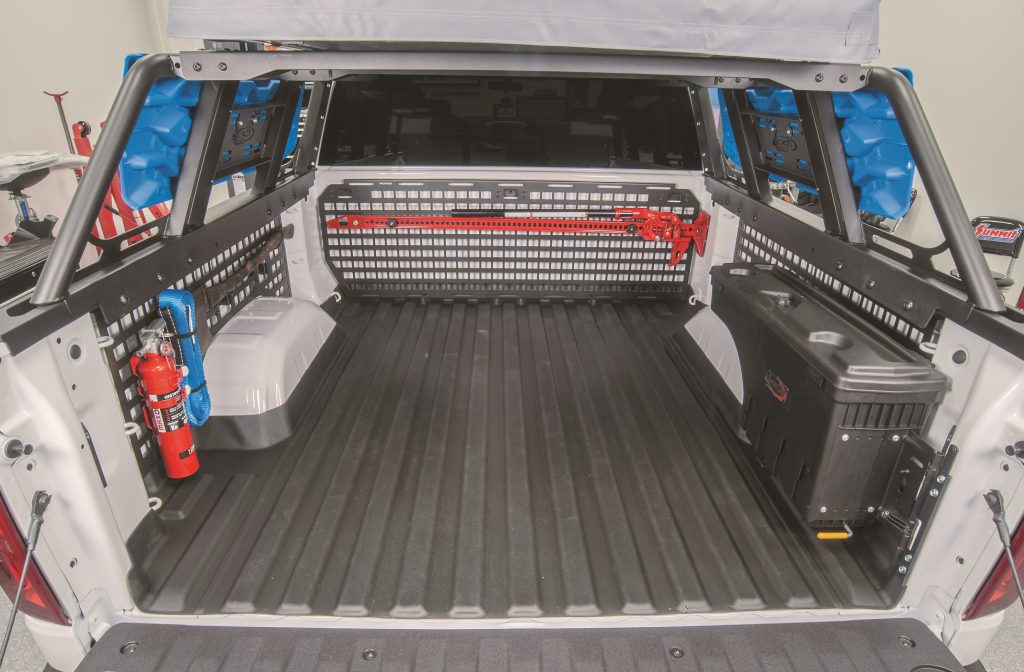Overlanding is a fusion of camping and off-roading, combining elements of each to form a distinct automotive/outdoor hobby.
It has its origins in the Australian outback, where early overland routes were formed to facilitate intracontinental travel and trade. It evolved first from horseback and then to rail, before it was finally mechanized for motorcycles and automobiles.
***
Story Summary Overview:
- Overlanding as a modern automotive trend has its origins in the Australian outback
- It centers around a vehicle transport that is outfitted with equipment & sundries to sustain an expedition
- Overlanding blends facets of both off-roading & camping
- Nowadays, overlanding is tailored to an outdoor lifestyle, in which a vehicle serves as a rolling campsite
- This article offers some common types of overlanding setups, plus recommendations on the best overlanding vehicle & popular overlanding equipment
***
What is Overlanding?
Nowadays, overlanding is done more for recreation than necessity.
Yes, overlanding is sometimes referred to as “car camping,” but it goes much deeper than that.
Overlanding is built upon the spirit of adventure and self-reliance—the idea of travelling into the wilderness, carrying only the essential gear for whatever you expect to encounter.
We’re posting a handful of articles that really dive into overlanding details like cargo racks, tools, vehicle recovery, radio communications, tents, packing checklists, and more. Check out our Overlanding Essentials series.
An overland trip might be a simple off-the-grid weekend, or a months-long excursion to a remote destination.
But perhaps what truly separates overlanding from camping, is the role your transportation plays in the adventure.
Hannibal had his elephants, Lewis and Clark had their canoes, and NASA had its Saturn V.
In the same vein, overlanders rely on trucks, Jeeps, SUVs, motorcycles, ATVs—even full-size vans are quite popular as overlanding rigs.
The proper overlanding vehicle must be equipped to traverse an almost infinite combination of terrain and weather. To compound the complexity, the vehicle must be able to transport water, food, shelter, tools, and other essential sundries.

How to Get Started in Overlanding
For starters, your mindset is far more important than your gear and equipment.
Make no mistake: overlanding is hard work, and you’re often faced with extreme temperatures and all-manner of Mother Nature’s curious critters.
But, for overlanding enthusiasts, that’s the entire point.
U-joints shear, tires rupture, and paint gets scratched—you’re the one that has to deal with it.
You can go days without a shower, and your evening meals might consist of black coffee and whatever you could fish out of the nearest river.
If that sounds like fun, read on.
What’s the Best Overlanding Vehicle?

As mentioned above, overlanding vehicles can be trucks, SUVs, motorcycles, custom-built rigs, and beyond. Seemingly any vehicle originally built with some off-road intent can be adapted into a solid overlanding ride.
Popular choices include trucks and SUVs like the Toyota Tacoma and Land Cruiser; Jeep Wrangler and Cherokee XJ; the Chevy Colorado; and Nissan Xterra.
There are a lot of motorcyclists who are into overlanding as well. So much so that an entire market segment has been established to support them. These “adventure bikes,” as the industry defines them, combine the qualities of both dirt bikes and street motorcycles. Common adventure bikes include BMW’s GS series, the Honda Africa Twin, and the Kawasaki KLR 650. (A sidecar-equipped Ural is a good choice for two-wheeled overlanding with a companion.)
Truth is, many vehicles can be made into competent overlanders. Better yet, the overlanding community is about as welcoming as you can get.
There are dozens of online forums where questions are always welcome and you shouldn’t fear any snobbery from fellow overlanders.
Perhaps more important than the vehicle year/make/model, is how you chose to outfit it for your adventure. (More on that in a second.)
What Do You Need for Overlanding?
First, let’s be clear, ‘need’ is a relative term.
Second, OnAllCylinders is an automotive blog, so we’re not going to focus on the camping facet (sleeping bags, backpacks, boots, etc.) of overlanding—you can dig up plenty of information on camping gear with a simple internet search.
Instead, we’ll explore (pun intended) some popular overlanding vehicle upgrades and accessories.
While folks may disagree about how necessary some of these are, they do represent a good sample of the aftermarket offerings available to overlanders.
Note: This is by no means a complete list, but rather a good starting point. Do your own research for the particular environment you plan to explore, and pack accordingly.
Tools – Things will break. You need to fix them. Assess what tools your vehicle will need and assemble a tool kit to keep them all together. A tire patch kit is a smart investment.
Roof Racks – One thing practically all overlanding rigs have in common is a quality luggage rack, also known as a “safari rack” or “safari basket.” Available from well-known brands like Thule and Curt, the right rack can greatly increase your cargo capacity.
Tent – While it may make sense to sleep in your vehicle cabin, the reality is that it’ll likely be loaded with gear. A bed tent or roof-mounted tent is a smart choice. Many can be deployed quickly with minimal setup/take-down time.
Mattress – If you’re overlanding in a pickup truck, then you may be able to easily stuff an air mattress in the back.
Cargo Storage – You’ll need to carry many things. Storage solutions like DECKED‘s in-bed cargo drawers and NANUK protective cases can come in handy.
Food Storage/Prep – ARB makes portable refrigerators that run off of vehicle power. Add a nice camp stove, and you can eat pretty darn well off the grid.
Fluid Transport – While the ubiquitous “jerry can” is an always-popular choice, Daystar’s got a modern alternative called “Cam Cans.” The system includes a unique set of mounts and can be optioned with various utility jugs and tool cases.

Off-Road Vehicle Gear – Honestly, we could devote a 5,000-word article to this one subject, but we don’t want to lose focus here. Since the type of off-road gear you’ll need can vary greatly by the type of terrain you’re covering, we’ll simply say that off-roading gear (like a winch, suspension upgrades, auxiliary lights, and off-road tires) is an essential part of a competent overlanding rig.
First Aid Kit – Hopefully you’ll never have to use it, but not having one is downright foolish.
Bike Rack – Though not an ‘essential,’ a mountain bike can be a handy asset if you’ve set up a base camp and want to scout nearby areas.
Portable Generator – Again, not an ‘essential,’ but if you’ve got the room, a generator can be an invaluable asset for powering electrical gear.
Other Cool Overlanding Stuff – Mr. Heater’s got a fan/light combo that can be hung from the roof of your tent/trailer. Portable shower systems can be an easy-to-haul luxury. Satellite-based GPS units work even when you’re outside of mobile phone coverage.
Tread Lightly
Any time you take a vehicle off-road, you risk having a negative impact on your environment. Make sure you’re travelling only in areas where you’re allowed to go and be aware of your surroundings. This protects both the environment and you. Stories abound of off-roaders getting stuck or venturing into harm’s way. Be mindful of your campsite, properly extinguishing any campfires and cleaning up any litter before leaving. Here’s a good website to learn more about what you can do to mitigate any harmful effects of trekking off-trail.

[…] Overlanding is getting more popular in the United States. […]
Hello!
I love this post and we love overlanding!
I’m just starting the process of researching options to spread the word of our overlanding adventure rental business, Overland Discovery, based in Colorado. We have a fleet of Jeep vehicles all equipped with roof top tents and decked out in other great gear for exploring the backcountry. The business was founded and runs on our passion for adventure and kickass vehicles! I feel we have many shared values in this department and I would love any advice you can offer to help us spread our mission: to get more people off the grid and into adventure!
We’d be happy to submit expert advice on building out a Jeep for overlanding but are also open to other ideas as you see fit.
I look forward to hearing from you!
Thank you,
Cara Russell
Overland Discovery
[…] Guide Series Dual Fuel is best for serious winter campers. It also works well for expeditions or overlanding. That said, most traditional car campers are better off with one of the propane stoves on our […]
This is about as new to the USA and the car is. It’s been done for as far back as I can remember, and with the smallest amount of research you can find people doing it back before color film. From all I can find it originated in North America. When you start out an article with a false preposition, the rest of the article lacks any credibility.
I completely agree with you Cal. This article had by biscuits steamed before I started reading, and it just got worse. Sounds like the person that wrote it is about 12 years old. I remember watching Neal Armstrong step foot on the moon on 20 July 1969 and the next day leaving with my dad and brothers for a 2 week long camping trip from Dallas, Texas to Silverton, Colorado in our old Ford Galaxy 500 Station Wagon, “Overlanding” Camping the entire time. I still go back there and I’m always amazed how far off-road we got with that old car with no lift, no mud tires, no winch, and had a complete blast with lasting memories. Call it what you like, Overlanding in not new……
[…] overlanding is, in short, a combination of camping and off-roading with a uniquely configured vehicle. It was once done as a necessity to discover new land but today […]
Thank you for the description! Been doing this for years & had no idea it had a name until this summer. I drive a Honda Pilot. And, yes. . . As a single female feel safer in this outdoor community than any hotel.
[…] this type of exploration is not new by any means, it is gaining popularity in America. It first began in the Australian outback as a way to make intracontinental travel and trade […]
[…] designed for traversing the backwoods and venturing off the beaten path. Great for boondocking and overlanding (self-reliant) adventures beyond the […]
[…] new in the U.S., overlanding combines elements of camping and off-roading into a single outdoor hobby built upon the spirit of adventure and self-reliance. True overlanding […]
Awesome post! We love Overlanding and it is surprising how many people have no idea what Overlanding is. You did a great job describing Overlanding. So glad you mentioned to have the proper mindset as well.
[…] Mercedes Beast Mode 4×4 is used as an overlanding van. If you’re not familiar with the term, overlanding refers to the act of exploring chosen […]
[…] Mercedes Beast Mode 4×4 is used as an overlanding van. If you’re not familiar with the term, overlanding refers to the act of exploring chosen […]
Great post! Very good overview and general definition. Sometimes it can be tough to explain this one but you nailed it. Well done.
Great article! It may be helpful to talk more about recovery gear, as it is some of the most important gear to have. There is always a possibility of getting stuck and you need to be able to get yourself out, especially if you are in the remote backcountry far away from any helpful strangers.
Check out my article on the best recovery gear, could be a great link for this article!!
Hey Kyle, thanks for the idea on recovery gear. We’re posting an Overlanding Essentials series, and we’ve dedicated and entire post to recovery gear. CLICK HERE to read it.
Awesome, Paul. I will check it out!
I guess people have been doing overlanding a lot without them even knowing that the kind of ‘camping’ they’re doing has its own name. And I’m no different haha.
[…] you know someone who’s into overlanding or spends an awful lot of time in their car, truck, or SUV, here are some gift ideas that […]
[…] Nevada backcountry, camping overnight in tents. If you’ve not heard the term before, “overlanding” is the latest word for car camping, except that it connotes car-camping away from established […]
[…] Nevada backcountry, camping overnight in tents. If you’ve not heard the term before, “overlanding” is the latest word for car camping, except that it connotes car-camping away from established […]
I used to think that offroading and overlanding were pretty much the same thing until I saw some kind of expo or convention for people with their personal vehicle builds.
[…] Not sure what overlanding is? Read this. […]
[…] Not sure what overlanding is? Read this. […]
[…] Not sure what overlanding is? Read this. […]
Good article! i’m also a fan of camping, especially in winter, with snowfall and my family’s RAM pickup truck which is awesome
[…] Not sure what overlanding is? Read this. […]
[…] Not sure what overlanding is? Read this. […]
[…] Not sure what overlanding is? Read this. […]
[…] Overlanding 101: What It Is and How to Get Started […]
Nice read! I am not sure if I missed it — But you did not mention shovels. Shovels are also a must-have when it comes to Overlanding!
Hey Chris, thanks for the compliment! And yeah, we kept this overview article a bit brief, but you can check out this Overlanding Tools Checklist we made that’ll fill in some gaps. Thanks again for reading!
I just found this article and it hits exactly on your point, Overlanding shovels lol!
This is really good info on the history of Overlanding, we get so caught up in cool guy gear on youtube it’s fun to just sit down and read about this stuff.
[…] of all, your mindset is the most important motor you will need. You have to be prepared for flat tires, going days without a shower, and your meals getting […]
[…] Several years ago, Matt Maier really got into overlanding. […]
how do you think a stock 2003 mitsubishi outlander XLS would do
Hey Bryson, you may want to listen to Matt Maier’s comments in this podcast. He basically stresses that it’s more about your attitude than your vehicle.
…
That said, even though it’s based on the Lancer compact, the Outlander still has room for some overlanding gear, like a safari rack, off road lights, and maybe even a mattress in the back. Click here to see some potential overlanding gear ideas. You didn’t mention if you have the FWD or AWD version, but it’s likely not going to do well with any serious off-roading trails, though that doesn’t mean you can’t take it a national park campground or into a field for some off-grid camping. Just get out there and have fun!